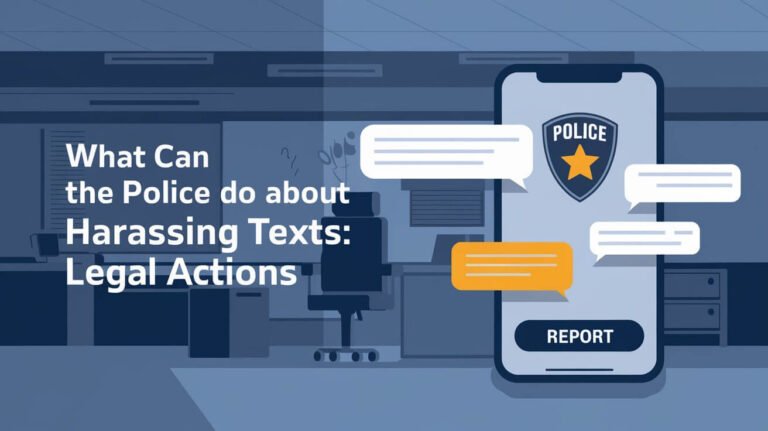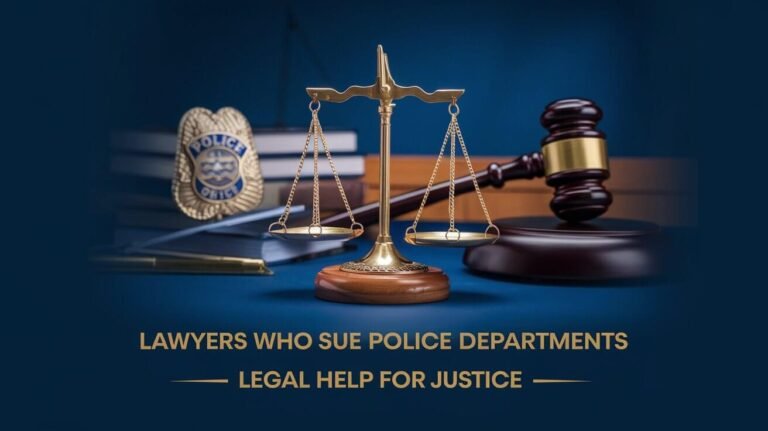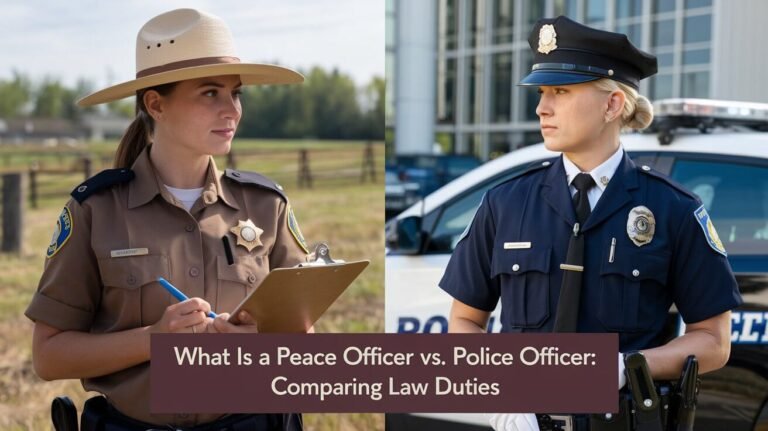How Does Police Get Access To Phones: Methods and Legal Procedures

In today’s world, our smartphones hold a lot of our personal info. You might wonder how police can get into your phone. It’s all about laws, special tools, and legal steps they follow.
Legal Framework Behind Phone Data Access
The laws about police getting phone data are complex. They balance the need to solve crimes with keeping personal info private. Important laws and court decisions guide how police use digital evidence and protect phone privacy.
Electronic Communications Privacy Act Overview
The Electronic Communications Privacy Act (ECPA) of 1986 is a key federal law. It controls when police can look at electronic messages and data. The ECPA sets rules for getting messages stored online and for intercepting them in real-time.
Fourth Amendment Protections
The Fourth Amendment of the U.S. Constitution protects against unfair searches. It says police need a warrant to get some digital evidence. This has sparked a debate about privacy and police work in today’s world.
Stored Communications Act Requirements
The Stored Communications Act (SCA) is part of the ECPA. It deals with police getting data from service providers, like emails and text messages. The SCA makes police get legal papers, like warrants, before they can access this data.
The rules around legal phone search, digital evidence compliance, and cellular privacy laws keep changing. This is because new tech comes out and courts figure out how old laws apply. It’s important for police and the public to understand these rules to keep everyone safe and private.
How Does Police Get Access To Phones
Police can get into phones in several ways. They might get consent, get a warrant, or use special tools. The rate of getting consent varies a lot. In Harris County, Texas, 53% of phone data was accessed with consent. But in Atlanta, only about 10% was.
Without consent, police need a warrant to look at phone data. They use tools like Cellebrite and AccessData to get past locks and find encrypted info. These tools can pull out lots of data, like where you’ve been, what you’ve searched, and who you’ve called.
| Location | Consent Rate for Phone Data Extraction |
|---|---|
| Harris County, Texas | 53% |
| Atlanta, Georgia | 10% |
Between 2015 and 2019, a study by Upturn found almost 50,000 times police used these tools. Over 2,000 agencies have used them at some point. This has raised big concerns about privacy and how safe our data is.
“The judiciary risks error by elaborating too full on the Fourth Amendment implications of emerging technology before its role in society has become clear.”
– City of Ontario v. Quon, 2010 Supreme Court case
Mobile Device Forensic Tools (MDFTs) in Law Enforcement
Law enforcement in the U.S. now uses Mobile Device Forensic Tools (MDFTs) to get data from phones. These tools, from companies like Cellebrite and AccessData, can get past security locks and find encrypted data. They can also find lots of data, like where someone was, what they talked about, and even deleted stuff.
Popular Forensic Tools and Vendors
More than 2,000 law enforcement agencies in the U.S. have bought MDFTs. The biggest 50 police departments can use these tools easily. Companies like Cellebrite, MSAB, Magnet Forensics, and Grayshift are the top vendors.
Data Extraction Capabilities
Smartphones hold a lot of personal info, and MDFTs can get it all. They can find contacts, web history, messages, social media, emails, photos, videos, and app data. They can even find deleted stuff with special techniques.
Device Compatibility Range
MDFTs work with many phones and operating systems. This means police can get data from both Android and iOS devices. With more people having phones, this is really important.
| Metric | Value |
|---|---|
| Law Enforcement Agencies Using MDFTs | Over 2,000 in all 50 states |
| Smartphone Ownership in the U.S. | 35% in 2011, 81% in 2022 |
| Cellphone Extractions by Law Enforcement | Hundreds of thousands, often without a warrant |
| MDFT Vendor Examples | Cellebrite, MSAB, Magnet Forensics, Grayshift |
Warrant Requirements for Phone Searches
When someone won’t unlock their phone, police must get a warrant to look at its contents. Warrants for phone searches can let police see all data on the device. This can lead to privacy issues and overreach.
In Pennsylvania, police need your okay or a warrant to check your phone’s data. A 2018 Pennsylvania Supreme Court case and a U.S. Supreme Court case said a warrant is needed for phone searches. Without one, police actions are seen as illegal.
The Fourth Amendment stops government from entering personal space without a good reason. This makes phone searches without a warrant a big constitutional issue. There are exceptions, like when there’s an urgent need to prevent harm. Evidence found without a warrant in Pennsylvania can’t be used in court.
Police can get third-party data with the right court order. If police search without a warrant, a lawyer might ask to throw out the evidence. Detectives try to get consent to search phones to avoid getting a warrant or going through a carrier.
Third-Party Data Access Methods
In today’s world, police have more ways to find information than just a suspect’s phone. They can look into cloud storage, social media, and work with service providers. This helps them find important data for their cases.
Cloud Storage Recovery
Law enforcement can get into cloud storage like Apple’s iCloud with the right legal papers. They can find messages, photos, and more that users have stored online.
Social Media Data Collection
Social media is a big help for police. They can watch these sites to learn about people and their actions. They use social media evidence collection to get this info, often with warrants or subpoenas.
Service Provider Cooperation
Police can also get data from service providers. This includes call logs, texts, and more. They get this through legal steps like subpoenas or court orders. How much they can get and the rules change based on the data and provider.
| Data Source | Legal Requirements | Examples |
|---|---|---|
| Cloud Storage | Subpoena or warrant | iCloud, Google Drive, Dropbox |
| Social Media | Subpoena or warrant | Facebook, Twitter, Instagram |
| Service Providers | Subpoena or court order | Telephone records, text messages |
The rules for police getting data from others are complex. Different places have different rules. If you’re in a case where police want your phone, get a lawyer. They can help protect your rights and make sure things are done right.
Phone Lock Bypass Techniques
Law enforcement agencies have found ways to unlock phones and get to the data inside. They use phone encryption bypassing techniques and mobile device unlocking methods. These methods keep getting better, matching the latest security in smartphones.
One way law enforcement gets into phones is with special software and tools. These tools, called Mobile Device Forensic Tools (MDFTs), can break passcodes or find weak spots in a phone’s security. A report by Upturn shows that between 2015 and 2019, US police used these tools almost 50,000 times to get into smartphones.
In big cases, police might work with outside cybersecurity companies. For example, the FBI spent about $1 million to unlock a shooter’s phone. This was revealed by former FBI Director James Comey and Senator Dianne Feinstein.
How well these phone encryption bypassing techniques and mobile device unlocking methods work depends on the phone and its security. Phone makers and operating system developers, like Apple and Google, are always updating to stay ahead. This makes it a constant battle for police to keep up with their decryption tools.
| Tool or Technique | Description | Effectiveness |
|---|---|---|
| Graykey | An advanced MDFT that can bypass passcodes on iOS and Android devices, costing between $15,000 and $30,000 according to Upturn’s report. | Highly effective, with the latest version supporting the latest iOS and Android models. |
| Cellebrite UFED | A popular MDFT used by law enforcement to extract data from a wide range of mobile devices. | Widely used, but effectiveness can vary depending on device and security measures. |
| Custom Solutions | Law enforcement agencies may contract with external cybersecurity firms to develop custom solutions for bypassing advanced security measures, as seen in the FBI’s $1 million investment to unlock a shooter’s phone. | Highly effective, but costly and time-consuming to develop. |
Types of Data Police Can Extract
Law enforcement agencies are using new tools to get more data from phones. These tools help them look into a suspect’s digital life. They find important information that helps solve crimes.
Location History and GPS Data
These tools can get a phone’s location history and GPS data. This shows where someone was and when. It can help figure out if they were at a crime scene or not.
Communication Records
Police can also get call logs, texts, and emails from phones. This helps them see who was talking to whom. It can show if someone was involved in a crime or not.
Media and File Recovery
Tools can even find deleted photos, videos, and documents. This helps understand what a suspect was doing. It can also find evidence that proves or clears someone’s name.
How much data police can get from a phone depends on the tools they use. But, more and more police in the U.S. are using these tools. This shows how important digital evidence is in solving crimes.
Privacy Rights and Phone Security
The use of mobile device forensic tools (MDFTs) by law enforcement raises big privacy worries. There’s a big debate about balancing law enforcement needs with digital privacy rights. Critics say these tools give too much personal info, more than needed for criminal cases.
Most police don’t have clear rules on using these tools. Keeping data even when no charges are filed is a big issue. Only a few states, like New Mexico, Utah, and California, require deleting data not needed for investigations.
Legal fights are ongoing about balancing digital evidence needs with the Fourth Amendment. With almost 70% of Americans using smartphones, protecting digital privacy is more important than ever.
Smartphone Security Measures
To tackle these privacy worries, smartphone users can take steps to boost their digital safety. Some key actions include:
- Turning on strong encryption and passcode protection
- Keeping their device’s OS and security software up to date
- Being careful with sharing personal info and location data
- Using VPNs to encrypt internet traffic
- Backing up data regularly and being cautious with cloud storage
Taking these steps, people can protect their digital privacy and reduce risks from law enforcement’s use of MDFTs.
| Statistic | Value |
|---|---|
| Cell phones in the U.S. (as of 2017) | More than people |
| Smartphones in the U.S. (as of 2017) | Nearly 70% |
| Millennials who carry a smartphone | 94% |
“Cell phone location data is collected in high volume, giving detailed info on a person’s movements. This raises big worries about constitutional privacy rights.”
Conclusion
Law enforcement’s power to get data from phones is a big deal for privacy and freedom. These tools help solve crimes but also worry about misuse. The laws around phone data are changing as courts figure out how to handle digital evidence.
As phones get more secure, police methods will keep changing. This creates a constant fight between keeping people safe and protecting their privacy. It’s important for everyone to stay informed and for courts to keep checking on these issues. The debate over phone data access implications and digital evidence ethics is ongoing.
As tech gets better, the law needs to keep up. This ensures our rights are safe while police can do their jobs well. Finding the right balance is key to protecting our privacy and freedom in today’s world.






